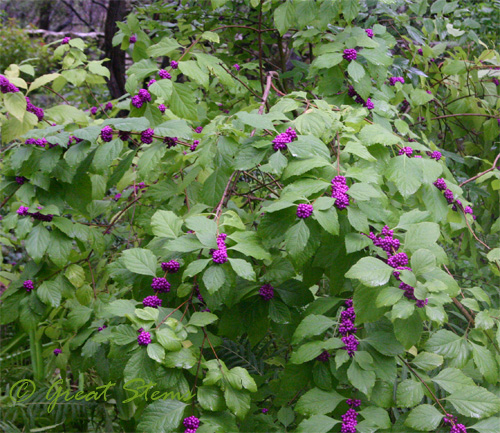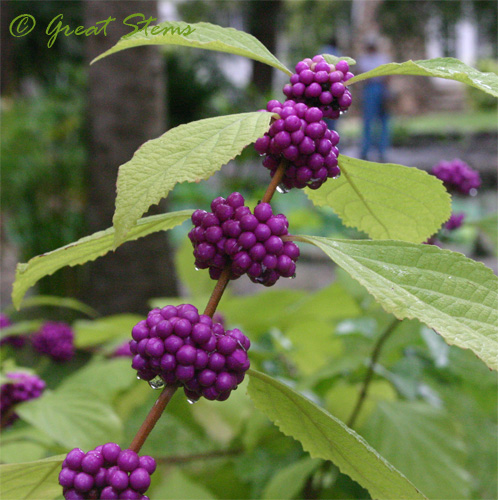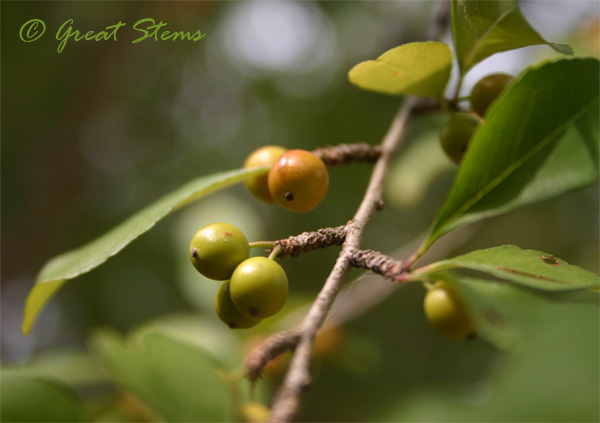My family and I enjoy visiting Walnut Creek Park here in Austin with our dogs and friends all throughout the year. This beautiful 300-acre woodland park is busy with strolling families, determined trail runners, frolicking leash-free dogs, and trail-riding, hill-leaping, rock-jumping cyclists. The biggest draw of all is nature, with woods, grasslands, crisscrossing streams, and abundant wildlife. This fall, the park has been adorned with spectacular blooms and berries, perhaps thanks to the well-timed rains we’ve had this season and earlier in the year.
FYI, these photos were taken with my smart phone over a three-week period.
Just three weeks ago, Maximilian Sunflowers (Helianthus maximiliani) brought bright sunshine to line the trails.
While many sunflowers are annuals, Maximilian Sunflowers are perennial members of the aster family, and while they wait all year until fall to finally show their true colors, the pollinators are grateful once they do.
Tucked into shadier areas, Calico Asters (Symphyotrichum lateriflorum) offered a subtle but happy fall presence.
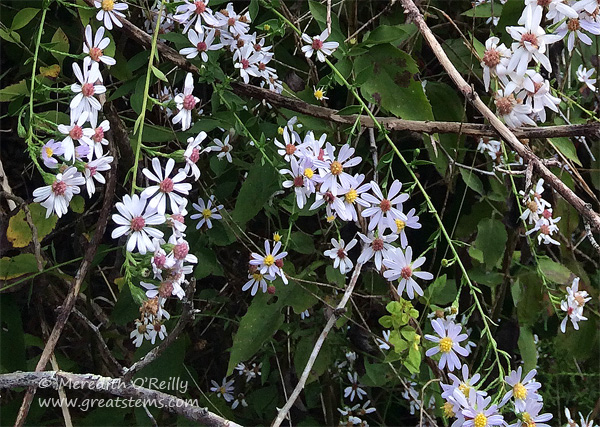
Calico Asters are so named because their disk flowers offer yellow centers that age to a darker red. The plant can have both colors on display at the same time.
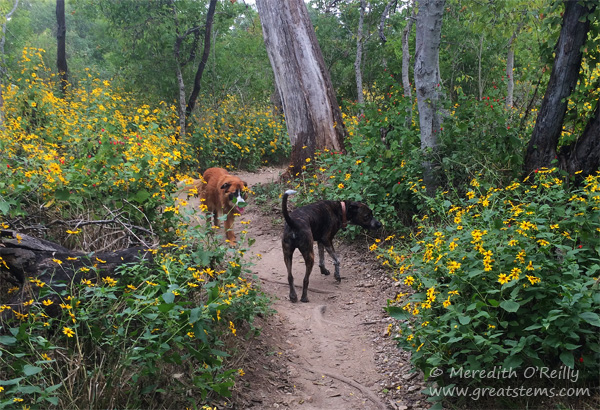
But the woodland areas also have their own yellow sunshine in the fall — Plateau Goldeneye (Viguiera dentata). This lovely aster is a prolific reseeder, but it is easy to manage. I have some special Goldeneyes in my backyard that were given to me by a dear woman who passed away this spring. They can reseed in my yard all they want, for each one is a memory of a wonderful environmental steward and friend.
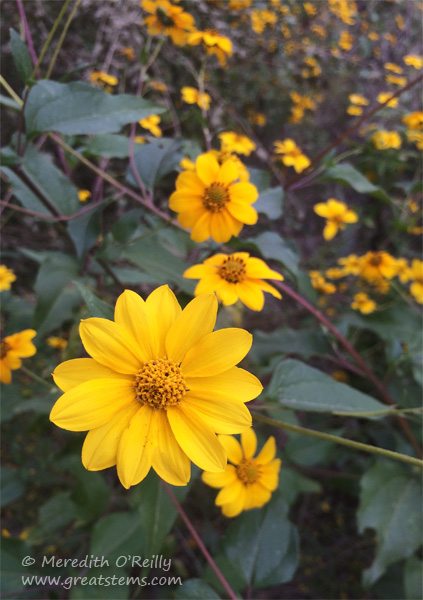
Plateau Goldeneye is not only beautiful, it is the host plant for Cassius Blue and Bordered Patch butterflies.
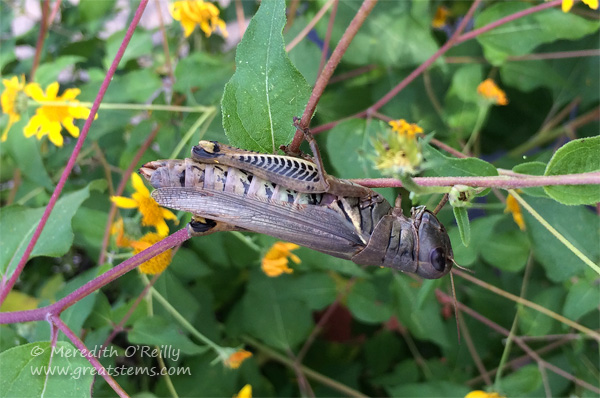
Apparently some grasshoppers find it tasty, too. This photo actually is of a muncher I saw at the Wildflower Center a couple of weeks ago. It didn’t bother to stop eating while I took its picture.
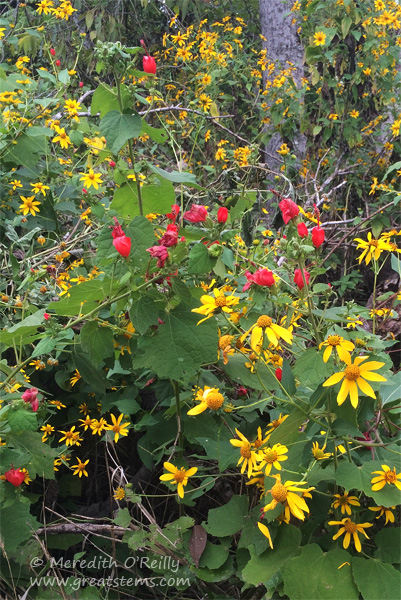
Above, Turk’s Cap (Malvaviscus arboreus var. drummondii) had a determined showing at Walnut Creek Park despite the abundant presence of Plateau Goldeneye. No worries, for it knows that its seasonal blooms will outlast the yellow ones of its aster companions.
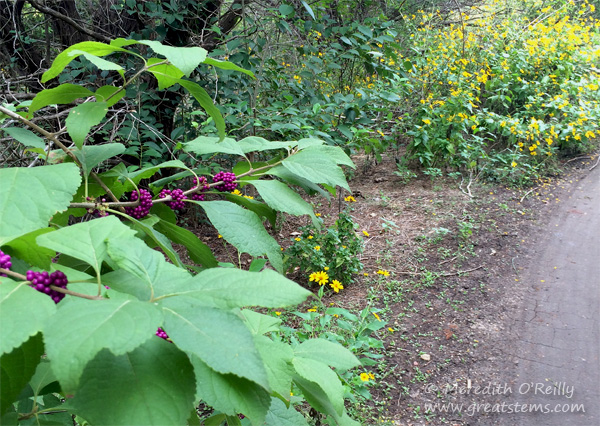
The berries of American Beautyberry (Callicarpa americana) gave a pleasantly shocking contrast of magenta. It’s hard to keep jogging or walking when these beautiful colors beckon you to stop. Mockingbirds would rather you keep going, however. Once you are out of the scene, they’ll get to work eating those beautiful berries.
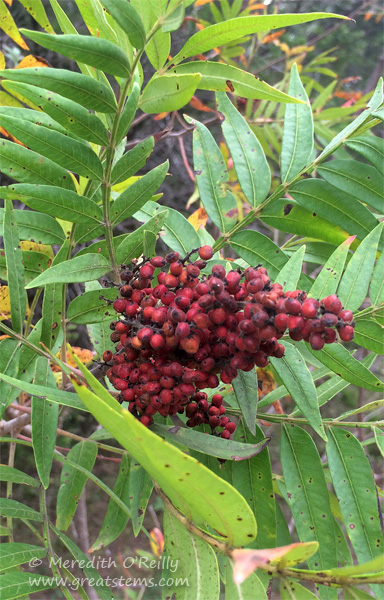
Clusters of Prairie Flameleaf Sumac (Rhus lanceolata) berries ripen in the fall to a dark red color. These tart berries can be soaked to create a lemonade of sorts, high in Vitamin C.
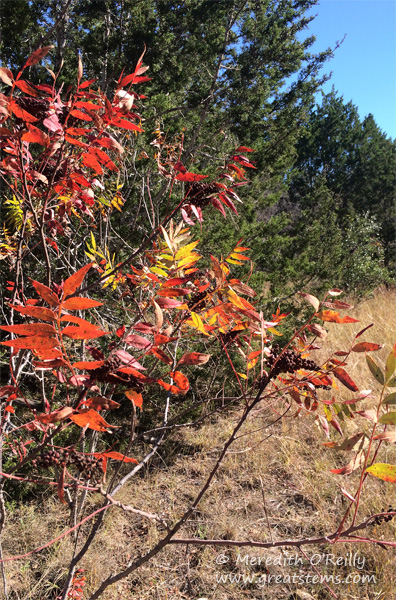
A few weeks later, the berries are shriveled, and the foliage changes to vibrant fall colors, well deserving of its Flameleaf name.
Sometimes the Walnut Creek woods open up to sudden pocket meadows, giving romping dogs opportunities to bounce above the grasses, chase rabbits, and collect many seeds in their fur.
Those grasses, catching sunlight with their wispy seedheads, have their own seasonal value, for they give wildlife an important food source throughout the cooler months ahead.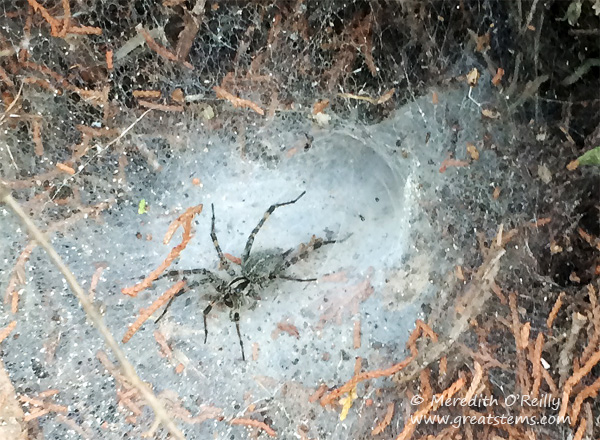
Not so much a bloom, this funnel weaver spider did at least come out of its cozy hiding spot to say hello as we traveled by.
Beautiful park, worth visiting if you are in Austin. Dogs, worn out and happy. Dog points earned for the family.
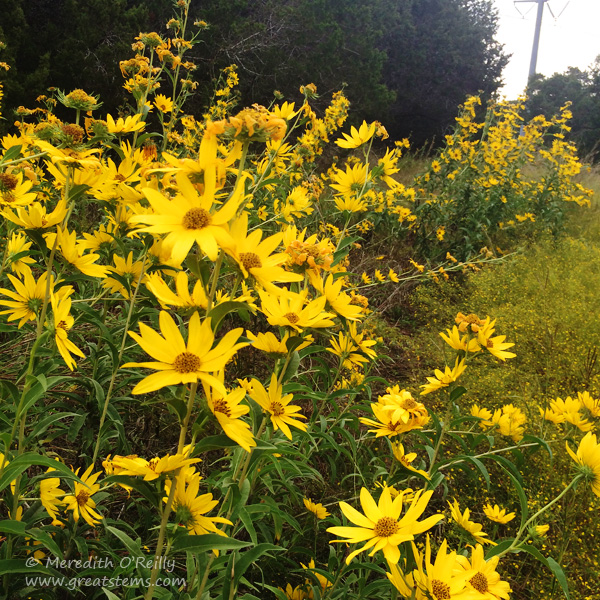
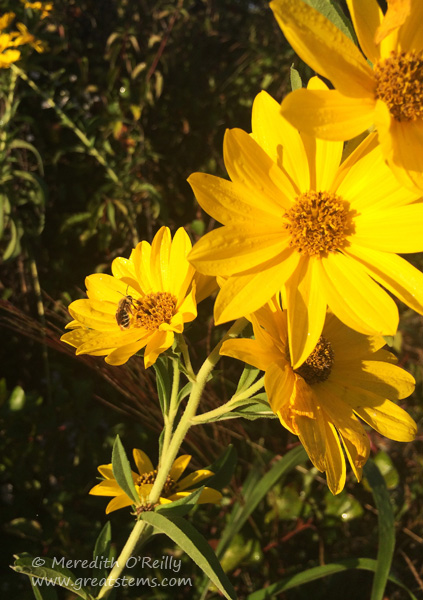
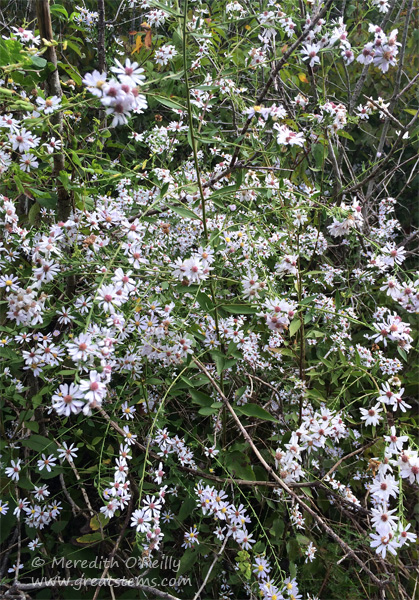
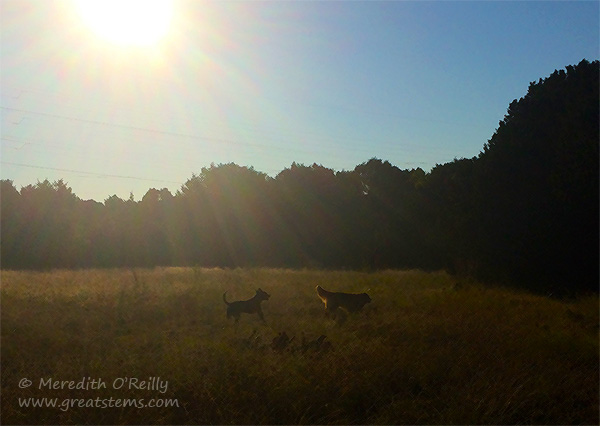
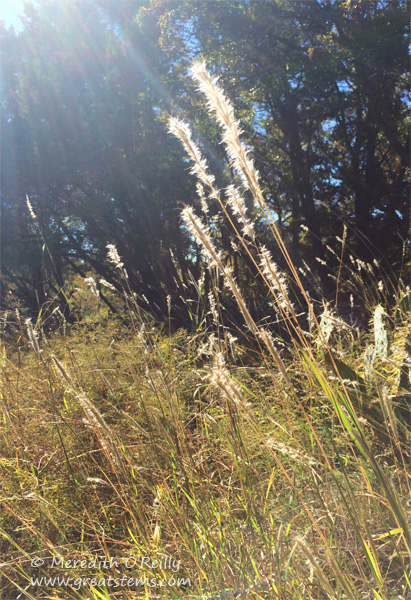
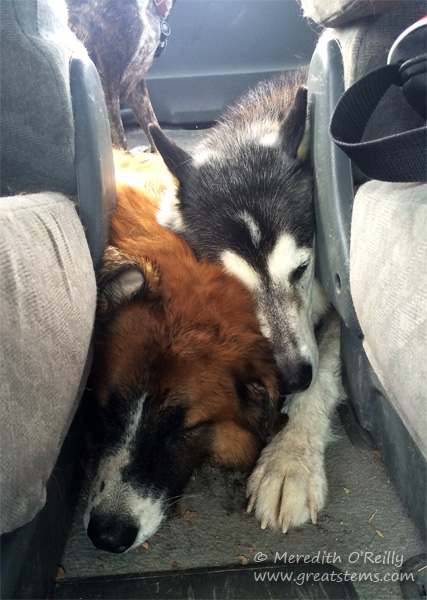
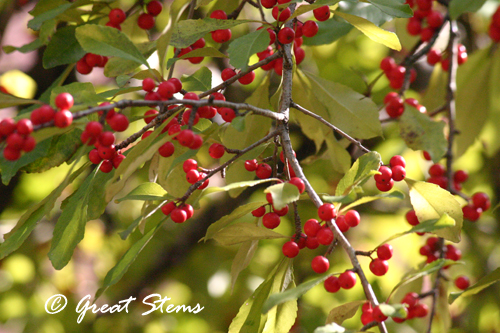
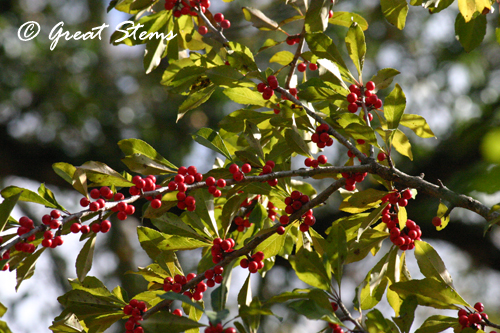 I think this tree must have had as much fun as I did with the
I think this tree must have had as much fun as I did with the 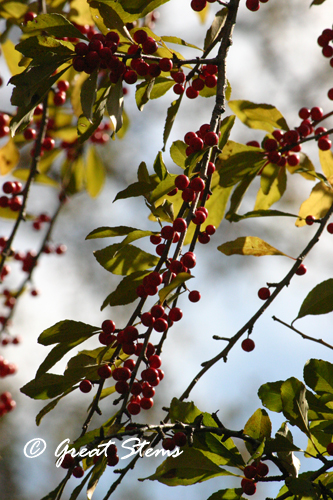
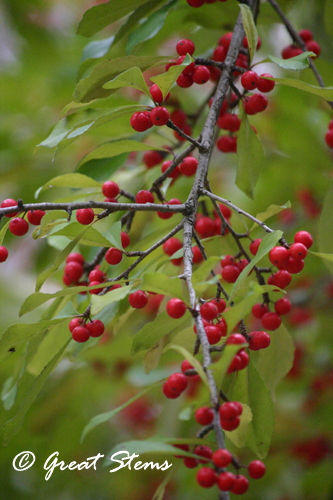 We interrupt this post to show you this adorable Black-Crested Titmouse, seed in beak. These cute little birds don’t like to sit still for pictures, so I’m amazed I got one. Oh my gosh, so cute.
We interrupt this post to show you this adorable Black-Crested Titmouse, seed in beak. These cute little birds don’t like to sit still for pictures, so I’m amazed I got one. Oh my gosh, so cute.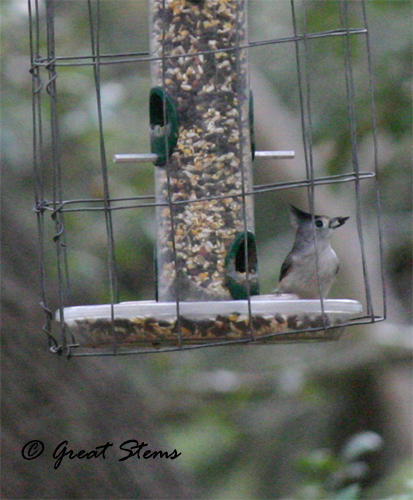
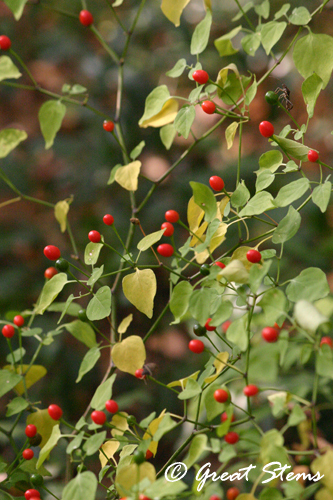
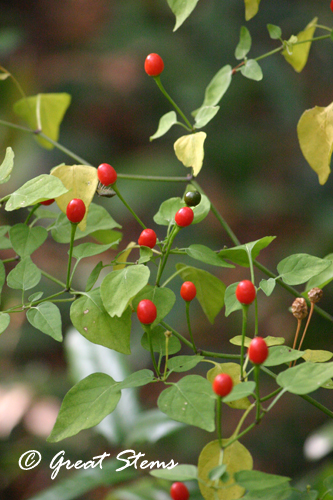
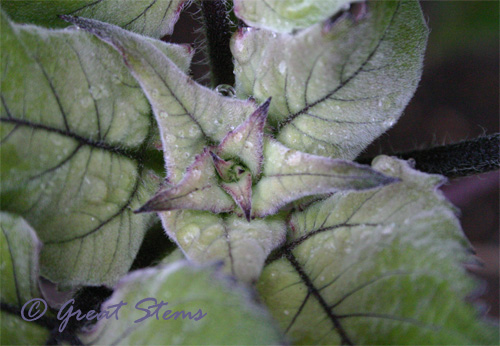
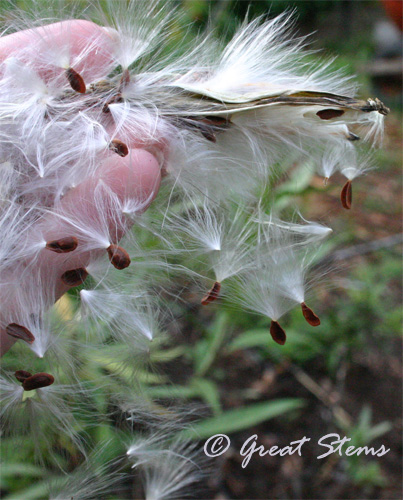
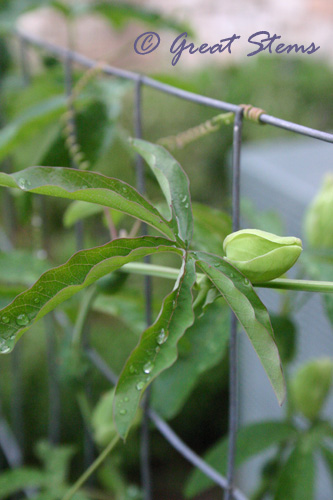
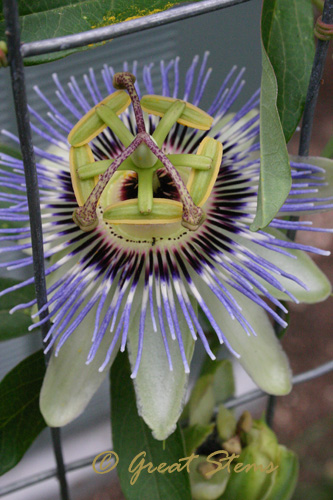
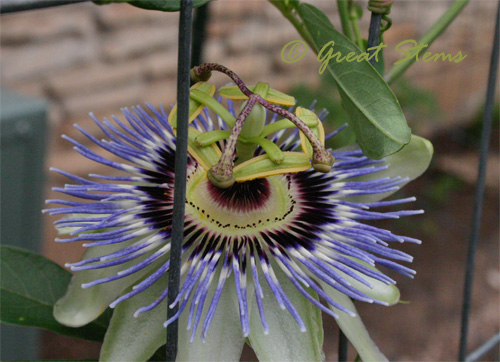
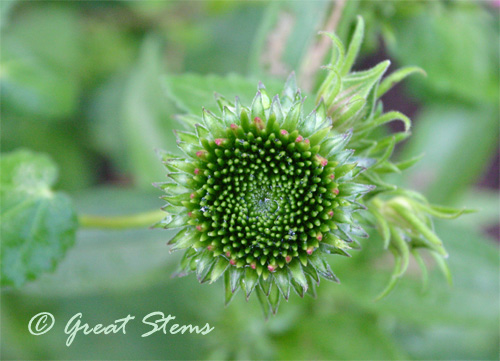
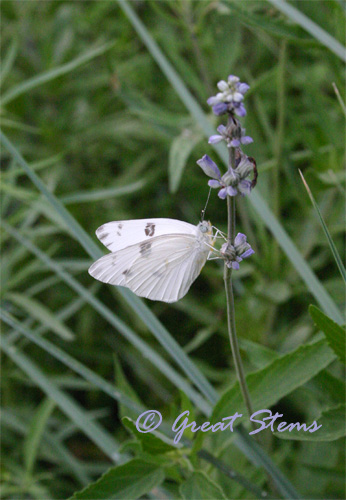
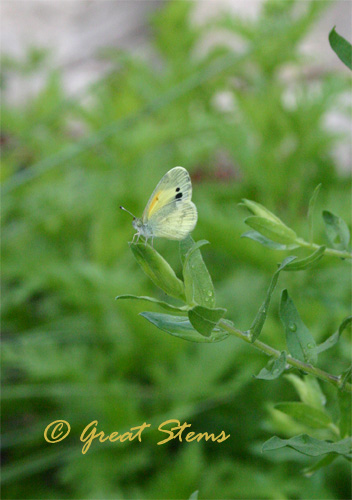
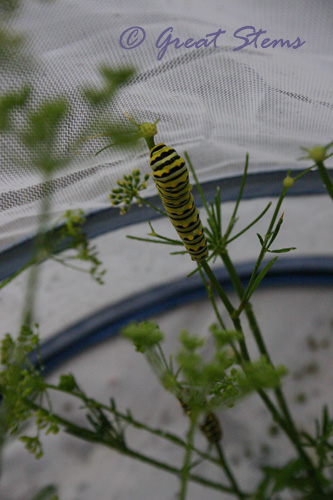
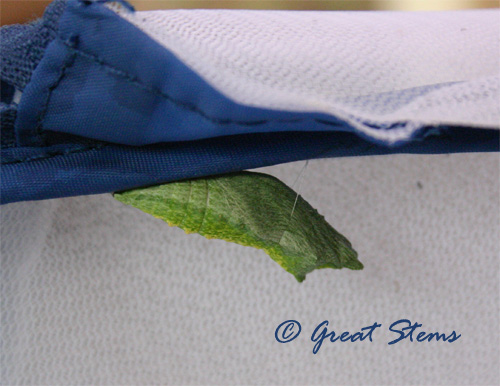
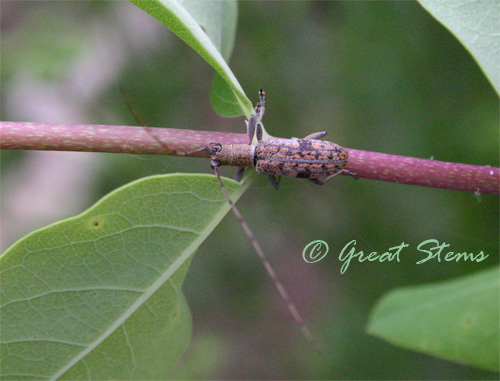
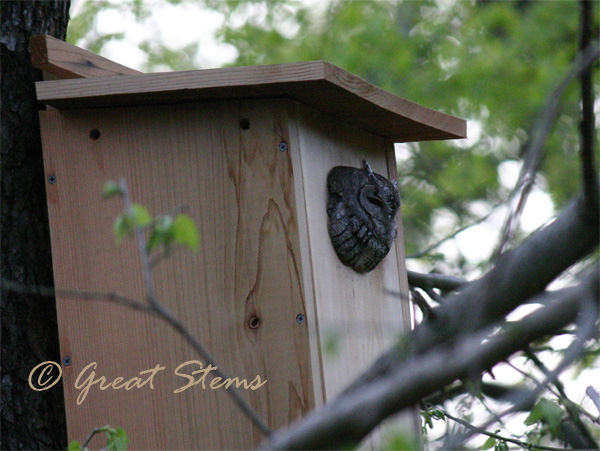
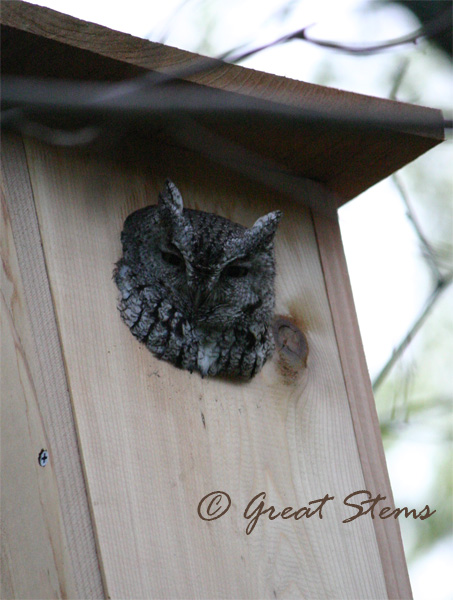
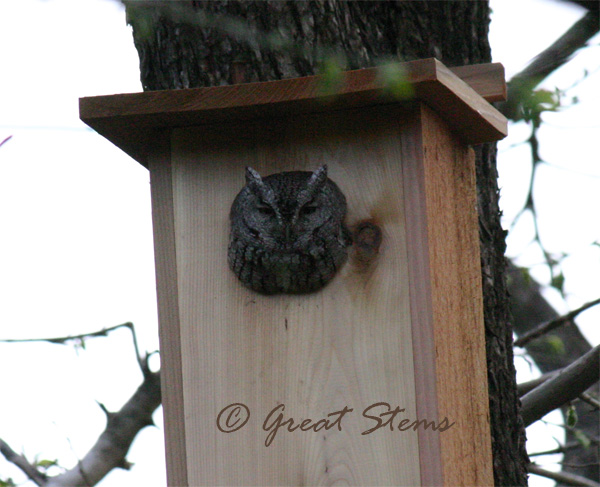 If this really is an owl couple we’ve got occupying our two owl houses, then it supports the idea that having two houses is more likely to attract owls sooner. It sure worked in our case.
If this really is an owl couple we’ve got occupying our two owl houses, then it supports the idea that having two houses is more likely to attract owls sooner. It sure worked in our case.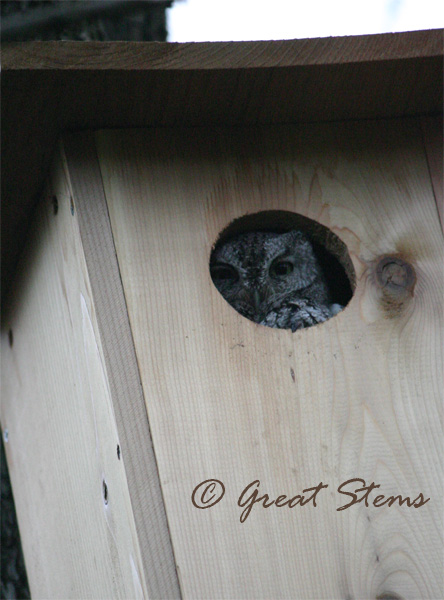
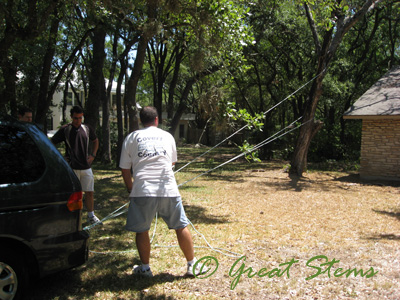
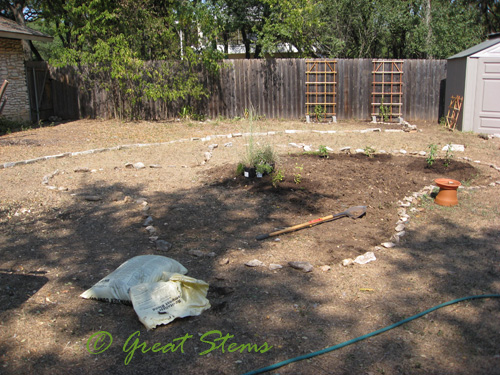
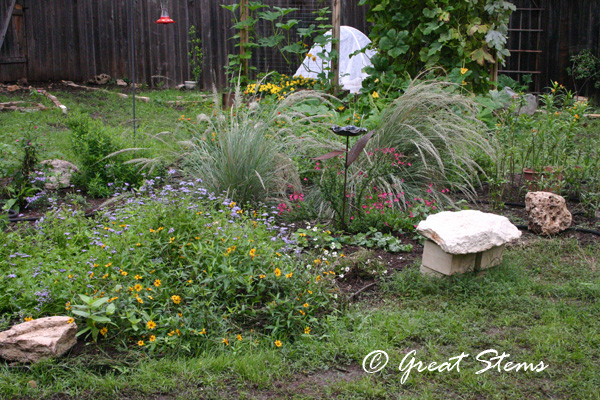
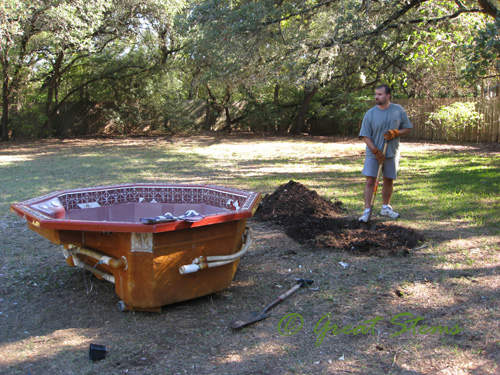
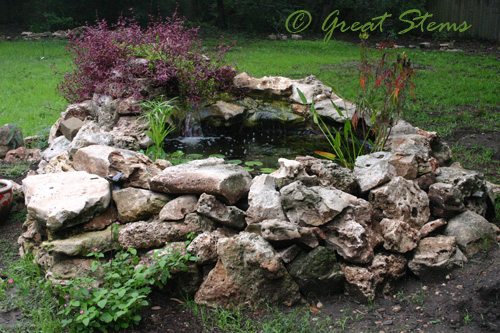

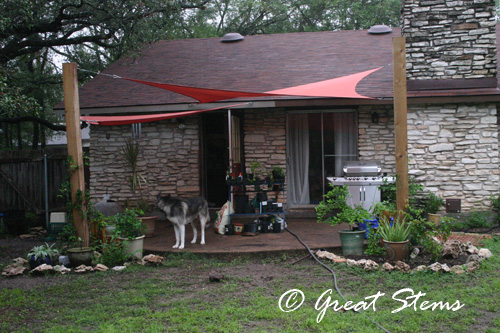
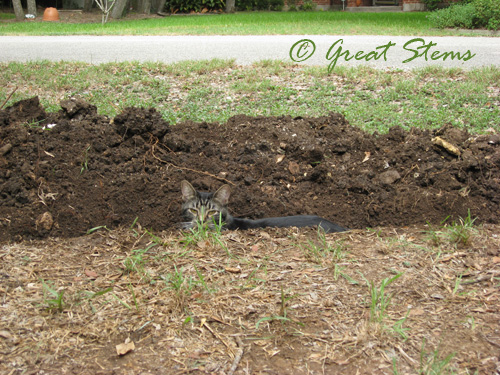
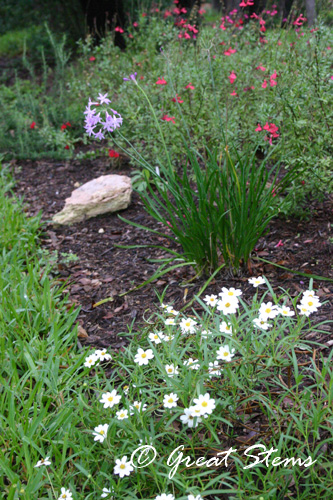 There’s a lot more to our yard than what you see here, and I invite you to
There’s a lot more to our yard than what you see here, and I invite you to 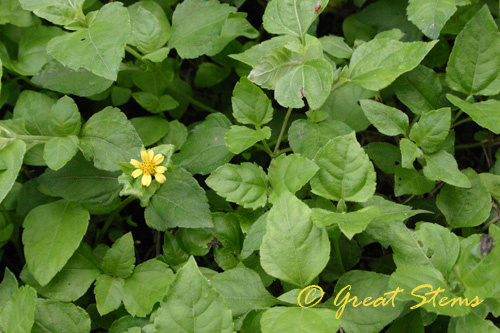
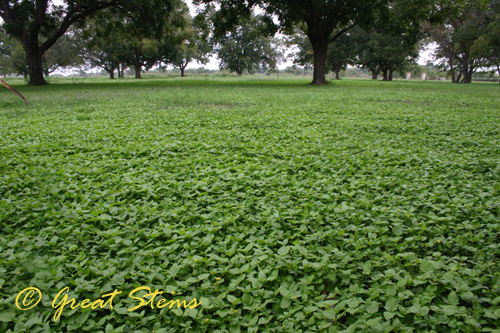
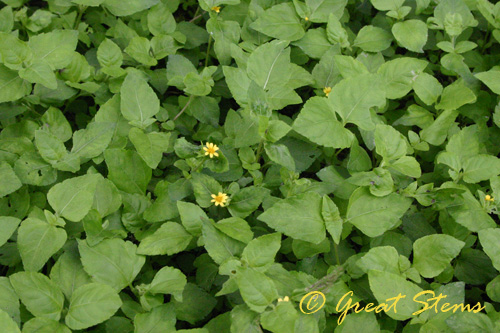
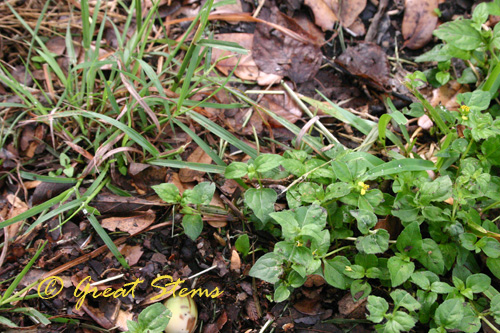
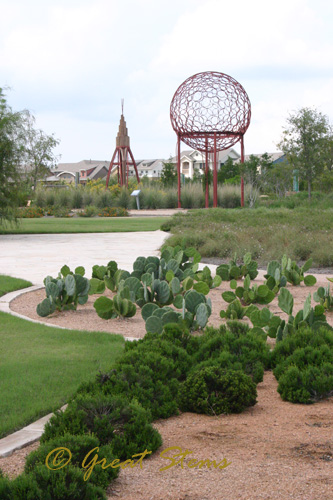
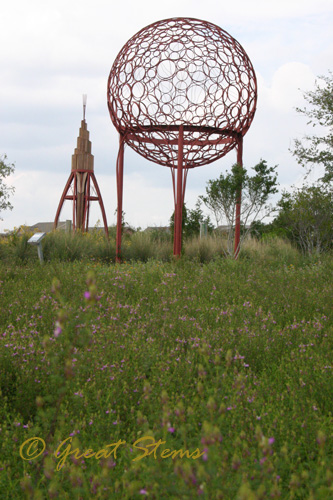
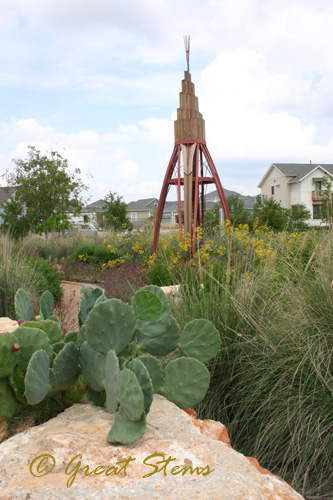 Lindheimer Senna…
Lindheimer Senna…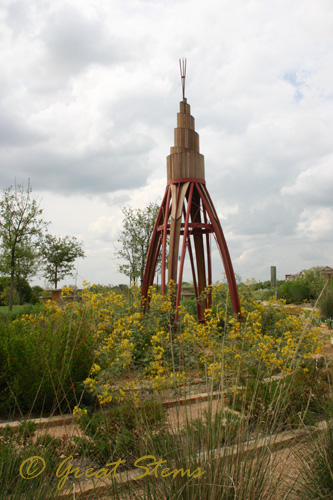
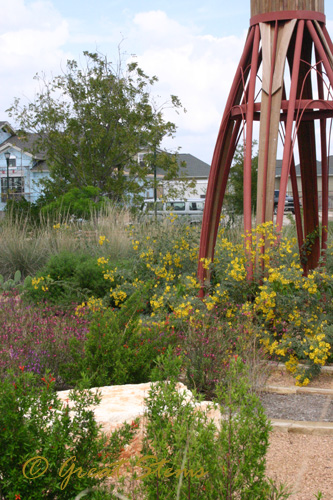
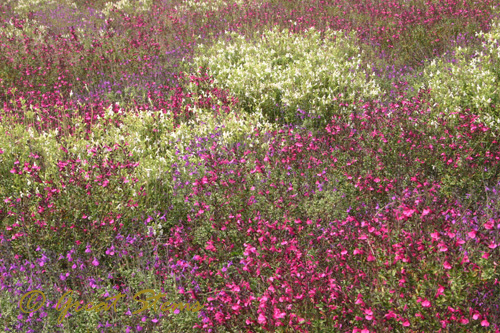
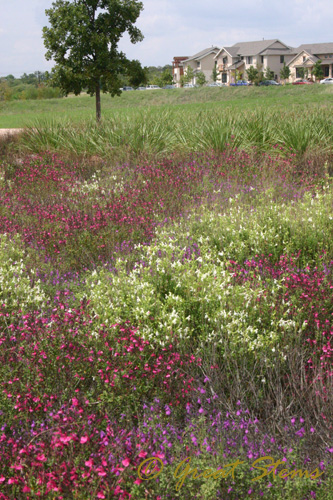
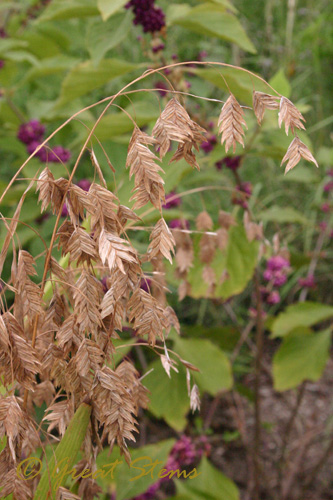
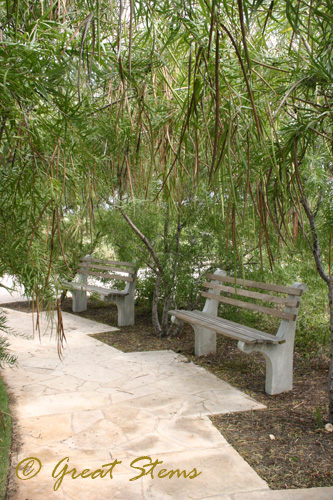 A view of the three ponds, surrounded by native grasses…
A view of the three ponds, surrounded by native grasses…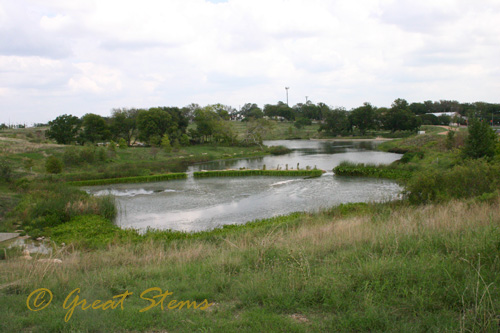
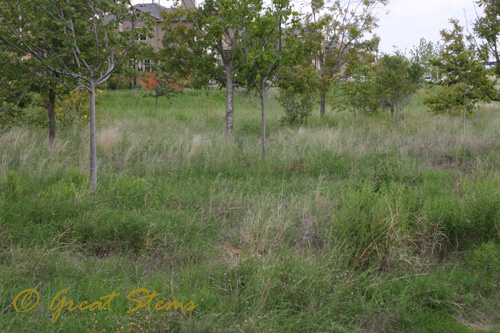
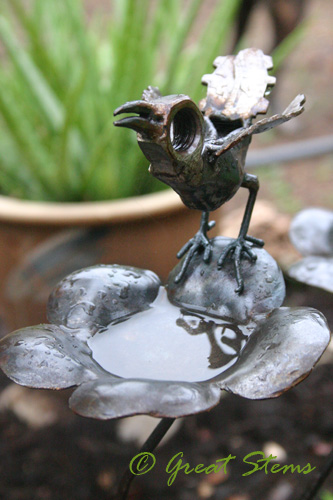
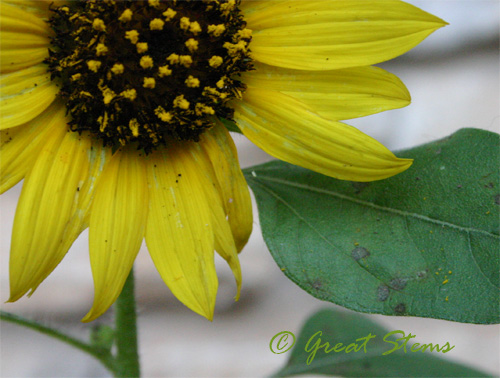
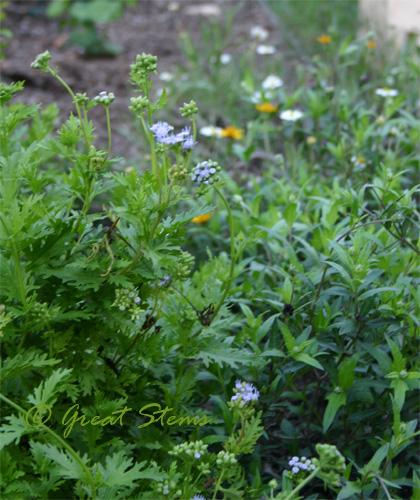 The Pigeonberry plants are blooming like crazy. They berry, too, but the birds pick them off so fast.
The Pigeonberry plants are blooming like crazy. They berry, too, but the birds pick them off so fast.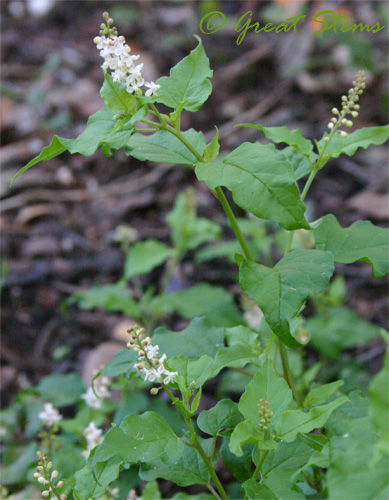
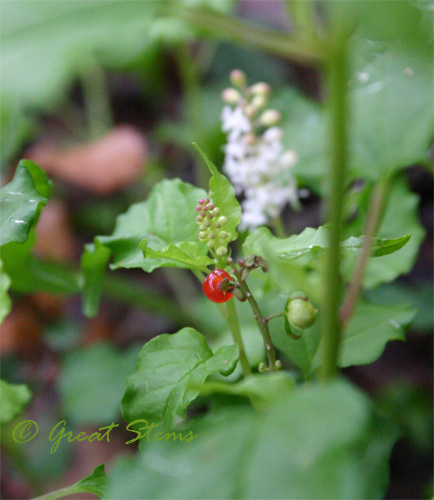
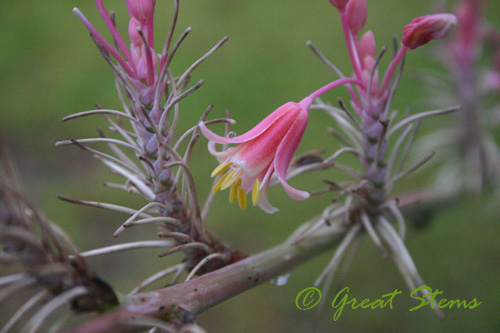
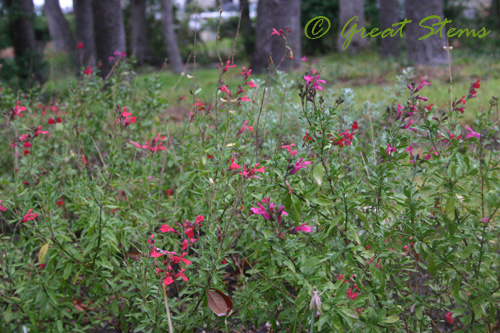
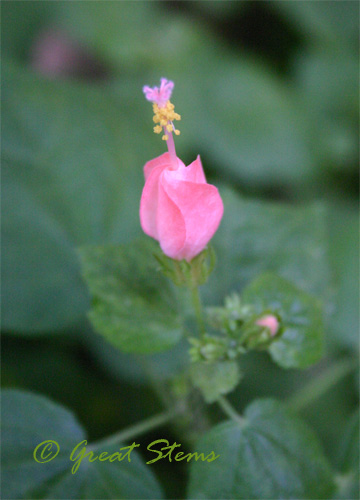
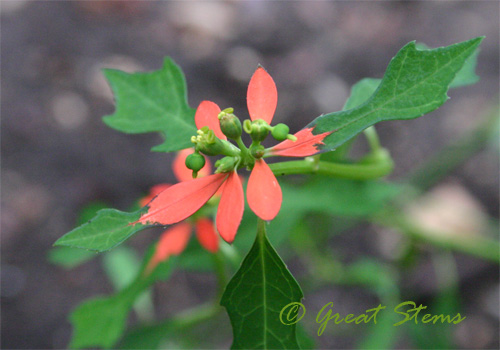
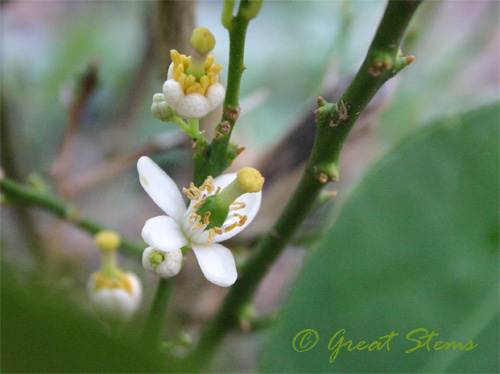
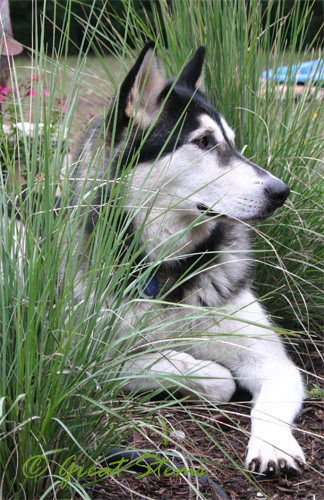
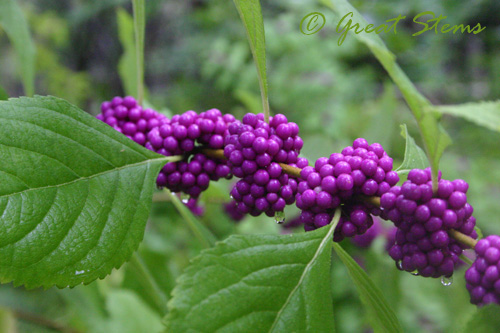 But aside from its beauty, what makes this shrub truly valuable is that it is a fall and winter food source for more than 40 different songbird species, as well as other birds. It also is enjoyed by mammalian wildlife, including the opossum and raccoon. Its deer resistance probably depends on your area and the harshness of seasonal weather. In some areas, deer leave the mature plants alone, but they’re happy to nibble on young shrubs and sometimes the berries. In general, though, it’s best to plant the shrub in a protected area if you are concerned about deer.
But aside from its beauty, what makes this shrub truly valuable is that it is a fall and winter food source for more than 40 different songbird species, as well as other birds. It also is enjoyed by mammalian wildlife, including the opossum and raccoon. Its deer resistance probably depends on your area and the harshness of seasonal weather. In some areas, deer leave the mature plants alone, but they’re happy to nibble on young shrubs and sometimes the berries. In general, though, it’s best to plant the shrub in a protected area if you are concerned about deer.